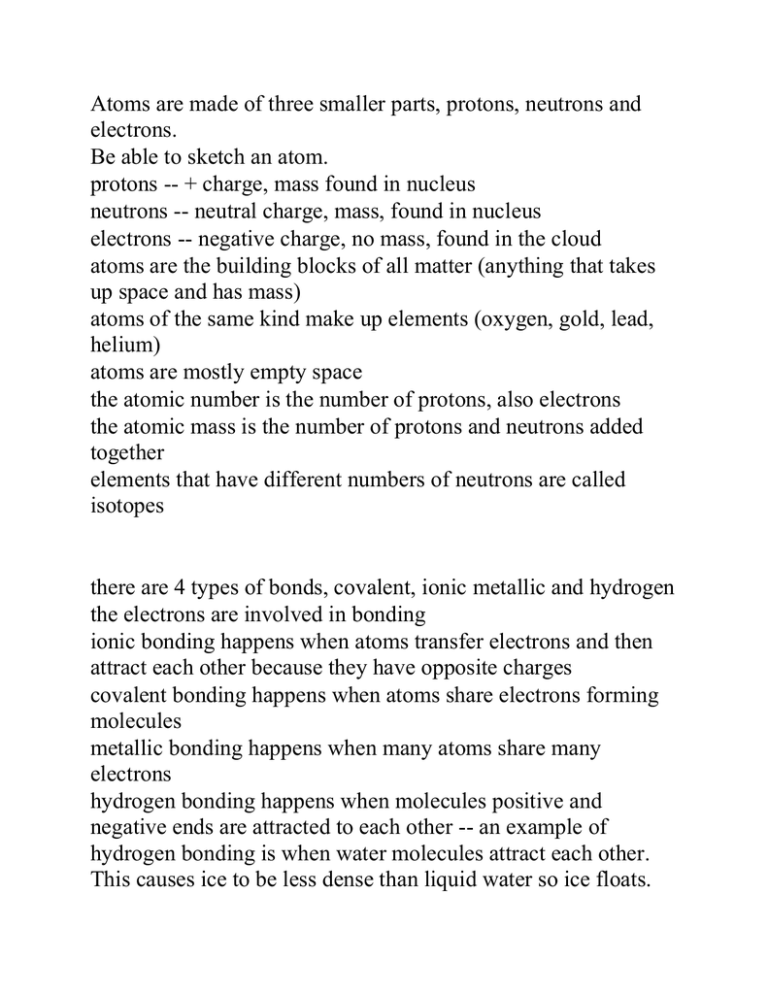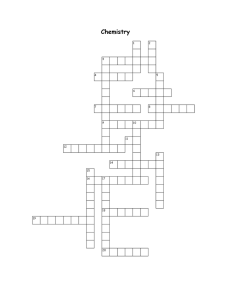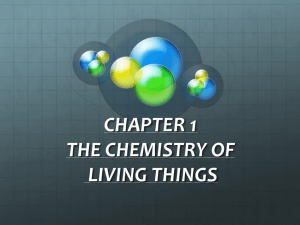Atoms are made of three smaller parts, protons, neutrons and
advertisement

Atoms are made of three smaller parts, protons, neutrons and electrons. Be able to sketch an atom. protons -- + charge, mass found in nucleus neutrons -- neutral charge, mass, found in nucleus electrons -- negative charge, no mass, found in the cloud atoms are the building blocks of all matter (anything that takes up space and has mass) atoms of the same kind make up elements (oxygen, gold, lead, helium) atoms are mostly empty space the atomic number is the number of protons, also electrons the atomic mass is the number of protons and neutrons added together elements that have different numbers of neutrons are called isotopes there are 4 types of bonds, covalent, ionic metallic and hydrogen the electrons are involved in bonding ionic bonding happens when atoms transfer electrons and then attract each other because they have opposite charges covalent bonding happens when atoms share electrons forming molecules metallic bonding happens when many atoms share many electrons hydrogen bonding happens when molecules positive and negative ends are attracted to each other -- an example of hydrogen bonding is when water molecules attract each other. This causes ice to be less dense than liquid water so ice floats. Mixtures and solutions no bonding happens two types of mixtures are homogeneous and heterogeneous complete mixing is called a solution and is a homogenous mixture examples: air and ice tea heterogeneous mixtures are when the mixing is not complete such as hot chocolate and cake mixes mixtures can be separated by physical means since no bonding occurs in mixtures -- compounds require chemical means to be broken down There are four states of matter: solid, liquid, gas and plasma. Most of the universe is in the plasma state. the lowest energy state is solid, then liquid, then gas and then plasma. speed of molecules determines the energy physical changes include change from one state to another physical properties are the ability to change chemical changes are from one compound into another, new substances are formed. chemical properties are the ability to react chemically. If a property can be observed without changing the substance into a new substance, then it is a physical property.





